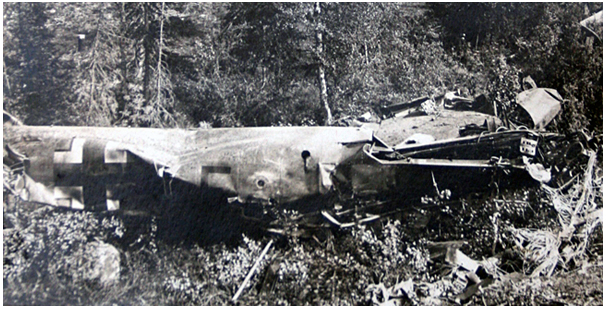FROM AIRACOBRA TO MiG-29

 |
The history of the 19th Guards Fighter Aviation Regiment |  |
By Anton Pavlov (2010)
For 17 years now, a renowned Guards fighter aviation unit equipped this entire time with MiG-29 frontline fighters has been based in the south of Russia in Rostov Oblast’ not far from the small old city of Millerovo (founded in 1786). In 2009, the unit was subjected to reorganization, as a result of which the local 19th Guards Fighter Aviation Regiment was transformed into a permanently combat-ready unit - a Guards category one air group that remained stationed at Millerovo Airfield.
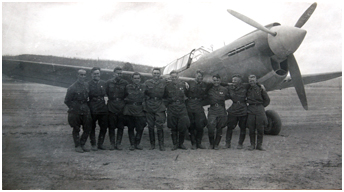 The history of the combat path of the oldest active Russian aviation regiment begins on January 17, 1940 when
the 145.IAP was formed in the village of Kayralo (formerly Finnish territory). Major V. N. Stoff was
designated as the first commander. Personnel from the first and second squadrons of the 138.IAP
(flying I-15bis fighters), the first squadron of the 20.IAP (I-16), as well as pilots from the 48.IAP and the
80.IAP (without their aircraft) became the foundation for the newly formed aviation unit. In accordance with
9th Army Military Air Forces (VVS) Order N°6 dated January 1, 1940 this concluded the formation of the
145th IAP. Subsequently, it was redeployed on March 24, 1940 to its permanent duty station at Shonguy
Airfield in Murmansk Oblast’ and became part of the 14th Army VVS 27th Aviation Brigade.
The history of the combat path of the oldest active Russian aviation regiment begins on January 17, 1940 when
the 145.IAP was formed in the village of Kayralo (formerly Finnish territory). Major V. N. Stoff was
designated as the first commander. Personnel from the first and second squadrons of the 138.IAP
(flying I-15bis fighters), the first squadron of the 20.IAP (I-16), as well as pilots from the 48.IAP and the
80.IAP (without their aircraft) became the foundation for the newly formed aviation unit. In accordance with
9th Army Military Air Forces (VVS) Order N°6 dated January 1, 1940 this concluded the formation of the
145th IAP. Subsequently, it was redeployed on March 24, 1940 to its permanent duty station at Shonguy
Airfield in Murmansk Oblast’ and became part of the 14th Army VVS 27th Aviation Brigade.
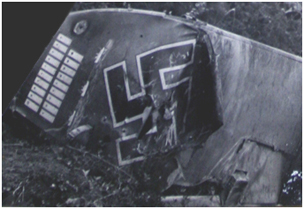 It is important to note that the majority of the pilots of the newly formed regiment at that moment had
experience in aerial combat against the Japanese near Lake Khasan and the Khalkin-Gol River, and in
Republican Spain. Moreover, prior to March 13, 1940 the regiment comprising three squadrons
participated in the war against the White Finns, flying 1125 sorties, and was in aerial combat four times
during which five enemy aircraft would have been shot down - the regiment lost also five aircraft in combat
during that war. Therefore, when at 4 a.m. on June 22, 1941 the
announcement of the onset of military actions by fascist Germany came via telegraph,
there was no confusion or disarray of any kind among the regiment’s officers.
Already by the fourth day of the Great
Patriotic war the pilots had engaged in their first aerial combat that ended up with victory over the enemy.
On August 4th Captain Zaytsev, who had previously fought in China and in the Winter War against Finland - for
which he received the Order of the Red Star - was leading a flight of seven LaGG-3 fighters
when they saw 13 Bf 110. Captain Zaytsev claimed three of the German fighters in the ensuing 35-minute dogfight.
One of his victims was the Hauptmann Gerhard Schaschke, the 19-victory commander of the Zerstörerstaffel/JG 5,
who was subsequently taken prisoner. Alexander P. Zaytsev was killed on 30 May 1942 when he crashed with his Airacobra
during a training flight. He had claimed 35 victories including 25 shared.
It is important to note that the majority of the pilots of the newly formed regiment at that moment had
experience in aerial combat against the Japanese near Lake Khasan and the Khalkin-Gol River, and in
Republican Spain. Moreover, prior to March 13, 1940 the regiment comprising three squadrons
participated in the war against the White Finns, flying 1125 sorties, and was in aerial combat four times
during which five enemy aircraft would have been shot down - the regiment lost also five aircraft in combat
during that war. Therefore, when at 4 a.m. on June 22, 1941 the
announcement of the onset of military actions by fascist Germany came via telegraph,
there was no confusion or disarray of any kind among the regiment’s officers.
Already by the fourth day of the Great
Patriotic war the pilots had engaged in their first aerial combat that ended up with victory over the enemy.
On August 4th Captain Zaytsev, who had previously fought in China and in the Winter War against Finland - for
which he received the Order of the Red Star - was leading a flight of seven LaGG-3 fighters
when they saw 13 Bf 110. Captain Zaytsev claimed three of the German fighters in the ensuing 35-minute dogfight.
One of his victims was the Hauptmann Gerhard Schaschke, the 19-victory commander of the Zerstörerstaffel/JG 5,
who was subsequently taken prisoner. Alexander P. Zaytsev was killed on 30 May 1942 when he crashed with his Airacobra
during a training flight. He had claimed 35 victories including 25 shared.
There were also irreplaceable losses alongside the victories. Thus, on June 10, 1941 three I-16s under heavy enemy antiaircraft artillery fire, attacked a vehicle column headed for the front lines. The aircraft of flight commander Lieutenant Aleksey Nebol’sin was hit and the pilot flew his burning aircraft into the enemy vehicle column. On June 27, 1941, Lieutenant Misyakov rammed the enemy during a combat of fifteen I-16s against a numerically superior enemy force and died a hero’s death.
 The Guards banner was presented to Guards Colonel Reyfshneyder, regimental commander,
on 20th June 1942. © A.Pavlov collection.
During the first three months of the war, the 145th Regiment succeeded in withstanding the enemy onslaught under the
difficult conditions of the polar day and the enemy’s numerical superiority, participating in combat
actions on the Murmansk, Kandalaksha and Kesten’ga axes. In accordance with USSR
Peoples’ Commissar of Defense Order N°102 dated April 4, 1942, the 145.IAP was transformed into the
19th Guards IAP 'for demonstrated courage, heroism and steadfastness in the struggle against
fascism' - the Guards Banner was presented to the regiment on June 20th of that year.
The Guards banner was presented to Guards Colonel Reyfshneyder, regimental commander,
on 20th June 1942. © A.Pavlov collection.
During the first three months of the war, the 145th Regiment succeeded in withstanding the enemy onslaught under the
difficult conditions of the polar day and the enemy’s numerical superiority, participating in combat
actions on the Murmansk, Kandalaksha and Kesten’ga axes. In accordance with USSR
Peoples’ Commissar of Defense Order N°102 dated April 4, 1942, the 145.IAP was transformed into the
19th Guards IAP 'for demonstrated courage, heroism and steadfastness in the struggle against
fascism' - the Guards Banner was presented to the regiment on June 20th of that year.
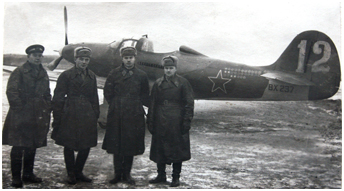 Still in April, the unit was pulled out of combat and transferred to Afrikanda
Airfield to receive Bell P-400 Airacobra 1 rejected by the RAF as well as Curtiss Kittyhawk. In this instance, the aircraft packed in crates
arrived directly at the combat regiment, bypassing the reserve aviation regiment (22nd ZAP at Ivanovo). Engineering and
technical personnel used their own resources to assemble the aircraft.
The latter became the regiment’s main aircraft type for several years and there are numerous warm
reminiscences and victories associated with it. It is notable that Captain Pavel Kutakhov, future twice
Hero of the Soviet Union, Chief Marshal of Aviation and Commander-in-Chief of the USSR Military Air
Forces, became the first pilot in the Guards regiment to fly the Airacobra 1.
At first, Soviet pilots approached without confidence the nose-wheel landing gear unusual for that time;
however, they very quickly noted the advantages of this landing gear scheme over the traditional scheme
with a tail-wheel landing gear: it provided better field of view and simpler control when taxiing. The pilots
also liked the way the fighters handled in the air. In maximum speed and climb rate, the Airacobra surpassed
any of the fighters previously in the regiment’s inventory. Canopy glass provided essentially a circular field
of view from the cockpit and the latter was roomy and comfortable even for Western standards, and it had a heater.
The significant inner volume of the cockpit was not the least thing in the severe Arctic conditions where pilots
were forced to fly wearing warm winter clothing.
The majority of Soviet fighters of that time generally lacked radios
and their cockpits were too crowded. Even in the latest MiG, LaGG and Yak aircraft, in the best case transceivers were
installed only in the aircraft of the flight commanders. Organization of two-way radio exchanges in the air allowed
a significant improvement in tactical employment of the P-39 fighters. Now any pilot, and not just the commander,
could either himself warn his comrades of danger or he could himself receive a timely warning.
Still in April, the unit was pulled out of combat and transferred to Afrikanda
Airfield to receive Bell P-400 Airacobra 1 rejected by the RAF as well as Curtiss Kittyhawk. In this instance, the aircraft packed in crates
arrived directly at the combat regiment, bypassing the reserve aviation regiment (22nd ZAP at Ivanovo). Engineering and
technical personnel used their own resources to assemble the aircraft.
The latter became the regiment’s main aircraft type for several years and there are numerous warm
reminiscences and victories associated with it. It is notable that Captain Pavel Kutakhov, future twice
Hero of the Soviet Union, Chief Marshal of Aviation and Commander-in-Chief of the USSR Military Air
Forces, became the first pilot in the Guards regiment to fly the Airacobra 1.
At first, Soviet pilots approached without confidence the nose-wheel landing gear unusual for that time;
however, they very quickly noted the advantages of this landing gear scheme over the traditional scheme
with a tail-wheel landing gear: it provided better field of view and simpler control when taxiing. The pilots
also liked the way the fighters handled in the air. In maximum speed and climb rate, the Airacobra surpassed
any of the fighters previously in the regiment’s inventory. Canopy glass provided essentially a circular field
of view from the cockpit and the latter was roomy and comfortable even for Western standards, and it had a heater.
The significant inner volume of the cockpit was not the least thing in the severe Arctic conditions where pilots
were forced to fly wearing warm winter clothing.
The majority of Soviet fighters of that time generally lacked radios
and their cockpits were too crowded. Even in the latest MiG, LaGG and Yak aircraft, in the best case transceivers were
installed only in the aircraft of the flight commanders. Organization of two-way radio exchanges in the air allowed
a significant improvement in tactical employment of the P-39 fighters. Now any pilot, and not just the commander,
could either himself warn his comrades of danger or he could himself receive a timely warning.
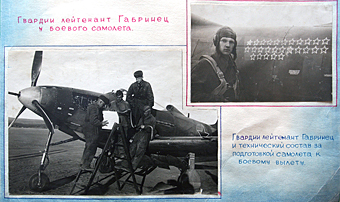 The emotions of Soviet pilots regarding the armament of the Airacobra were more contradictory. Pilots preferred the
20 mm automatic cannon, considering the Browning 7.7 mm machine guns insufficiently effective, useful only to inflict
damage on German aircraft, but not able to destroy them. The wing-mounted machine guns often were removed. The reduction
in aircraft weight increased its maneuvering capabilities, while the pilots did not think removal of two machine guns of
rifle caliber was a great sacrifice (the Aircobra 1 was armed with a 20 mm canon and two .50 machine guns in the nose, as
well as four .30 machine guns in the wings).
The airmen liked very much the later P-39Q Airacobra version that included a 37 mm cannon and four .50 machine guns - two
in the nose and two under the wings in gondolas.
According to Soviet standards, a fighter had to have one cannon and two large-caliber machineguns. The P-39Q even
exceeded this requirement. The wing-mounted machine gun containers
were most often removed from the P-39Q to lighten the aircraft. The consideration was that the firepower remaining after
removal of the machine guns entirely sufficed.
Soviet pilots considered the Airacobra a maneuvering fighter that did not cede anything to the enemy either in the verticals
or in the horizontal. The evaluation differed strikingly from that of American pilots. It was a case where the Americans did
not like the conduct of the Airacobra primarily at high altitudes at a time when most of the aerial combat on the Soviet-German
front took place near the ground or at medium altitudes. At the same time, the Russians found several deficiencies in
the American aircraft.
The emotions of Soviet pilots regarding the armament of the Airacobra were more contradictory. Pilots preferred the
20 mm automatic cannon, considering the Browning 7.7 mm machine guns insufficiently effective, useful only to inflict
damage on German aircraft, but not able to destroy them. The wing-mounted machine guns often were removed. The reduction
in aircraft weight increased its maneuvering capabilities, while the pilots did not think removal of two machine guns of
rifle caliber was a great sacrifice (the Aircobra 1 was armed with a 20 mm canon and two .50 machine guns in the nose, as
well as four .30 machine guns in the wings).
The airmen liked very much the later P-39Q Airacobra version that included a 37 mm cannon and four .50 machine guns - two
in the nose and two under the wings in gondolas.
According to Soviet standards, a fighter had to have one cannon and two large-caliber machineguns. The P-39Q even
exceeded this requirement. The wing-mounted machine gun containers
were most often removed from the P-39Q to lighten the aircraft. The consideration was that the firepower remaining after
removal of the machine guns entirely sufficed.
Soviet pilots considered the Airacobra a maneuvering fighter that did not cede anything to the enemy either in the verticals
or in the horizontal. The evaluation differed strikingly from that of American pilots. It was a case where the Americans did
not like the conduct of the Airacobra primarily at high altitudes at a time when most of the aerial combat on the Soviet-German
front took place near the ground or at medium altitudes. At the same time, the Russians found several deficiencies in
the American aircraft.
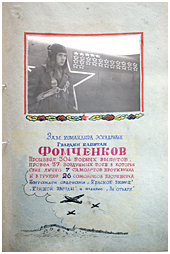 Almost all complaints centered on the Allison V-1710 engine that often overheated, and it malfunctioned when landing and often
in combat. The oil was not rated for the Russian winters so the lubricant thickened in the cold. There were cases of failures
of the driveshaft connecting the engine to the propeller in the cold. Some engine problems were able to be corrected through
engine modernizations that Allison made at the recommendations of Soviet engineers.
The Russians quickly noticed the tendency of the Airacobra to eagerly go into a flat stall. Since no technical fix to that
problem existed (nor was the Bell Company able to avoid the flat stall in the more modern Kingcobra), pilots were taught to
avoid dangerous flight modes. Nonetheless, several Soviet test pilots and front pilots crashed in stalled Cobras.
Almost all complaints centered on the Allison V-1710 engine that often overheated, and it malfunctioned when landing and often
in combat. The oil was not rated for the Russian winters so the lubricant thickened in the cold. There were cases of failures
of the driveshaft connecting the engine to the propeller in the cold. Some engine problems were able to be corrected through
engine modernizations that Allison made at the recommendations of Soviet engineers.
The Russians quickly noticed the tendency of the Airacobra to eagerly go into a flat stall. Since no technical fix to that
problem existed (nor was the Bell Company able to avoid the flat stall in the more modern Kingcobra), pilots were taught to
avoid dangerous flight modes. Nonetheless, several Soviet test pilots and front pilots crashed in stalled Cobras.
The 19th GvIAP returned to the front on May 15, 1942 under the command of Major G. A. Reyfshneyder. The unit included twenty-two pilots and the
aircraft inventory was sixteen Airacobra 1 and ten P-40E. By the evening of May 15 the regiment’s pilots already had flown a combat sortie
in which four Airacobras intercepted a group of twelve Bf 109 and eight twin-engine Bf 110 over Lake Tulp-Yarv. During the subsequent aerial combat, Captain
Kutakhov and Senior Lieutenant Bochkov each shot down an enemy aircraft. These were the initial victories by the Soviet Military
Air Forces flying the Airacobra.
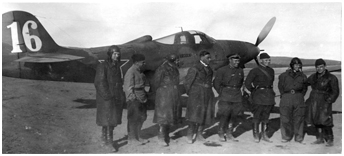 The next day Ivan Bochkov achieved yet another victory. On May 16 the regiment also suffered its first loss since being reequipped.
Senior Lieutenant Ivan Gaydenko destroyed a fighter while attempting to land his damaged Cobra (an Airacobra 1 with registration number AN660)
in the woods. The pilot himself did not suffer, but the aircraft could not be repaired.
Airacobra pilots had their first victory against “heavies” on June 15, 1942 when a group of six P-39 repulsed a raid on Murmansk by six Ju 88 bombers
escorted by sixteen Bf 109 fighters. The 19.GvIAP pilots shot down nine Luftwaffe aircraft without any friendly losses. Ivan Bochkov again excelled,
shooting down a Junkers and a Messerschmitt.
Bochkov did not have another kill until December 10. An Airacobra six-ship group led by Bochkov intercepted eighteen Ju 87 dive bombers and
twelve Bf 109 fighters. Soviet pilots always strived to shoot down the lead bomber in order to disperse the formation and sow panic. Two Ju 87, including
the German strike group commander’s aircraft, were shot down in the first attack. As the Russians anticipated, the formation of dive bombers immediately
dispersed. During a brief encounter, another three German aircraft were shot down. Bochkov added another kill to his personal count. All six Airacobras
returned to base successfully. Ivan Bochkov was awarded the title Hero of the Soviet Union in February 1943, having flown 308 combat sorties by that time,
and scored seven personal and thirty-two group victories.
While flying his 350th combat sortie on April 4, 1943, six Bf 109 jumped Bochkov and his wingman. The wingman’s aircraft quickly was damaged, but Bochkov was able
to cover his fighting comrade’s withdrawal. The ace scored his eighth personal victory prior to being shot down by a Messerschmitt. Ivan Bochkov was killed.
Six months earlier, on September 9, 1942, Senior Lieutenant Yefim A. Krivosheyev, took part in a battle
between eleven Soviet aircraft against seventeen enemy aircraft.
By that date, Krivosheyev had achieved five kills personally and fifteen as part of a group. In that memorable battle, Krivosheyev shot down a Bf 109,
and then noticed that another Messerschmitt was lining up on the tail of Pavel Kutakhov, his squadron commander. Krivosheyev’s Airacobra had no more ammunition.
The pilot decided to aim his aircraft at the German fighter and he rammed it. Krivosheyev died, but he saved the life of the squadron commander.
The next day Ivan Bochkov achieved yet another victory. On May 16 the regiment also suffered its first loss since being reequipped.
Senior Lieutenant Ivan Gaydenko destroyed a fighter while attempting to land his damaged Cobra (an Airacobra 1 with registration number AN660)
in the woods. The pilot himself did not suffer, but the aircraft could not be repaired.
Airacobra pilots had their first victory against “heavies” on June 15, 1942 when a group of six P-39 repulsed a raid on Murmansk by six Ju 88 bombers
escorted by sixteen Bf 109 fighters. The 19.GvIAP pilots shot down nine Luftwaffe aircraft without any friendly losses. Ivan Bochkov again excelled,
shooting down a Junkers and a Messerschmitt.
Bochkov did not have another kill until December 10. An Airacobra six-ship group led by Bochkov intercepted eighteen Ju 87 dive bombers and
twelve Bf 109 fighters. Soviet pilots always strived to shoot down the lead bomber in order to disperse the formation and sow panic. Two Ju 87, including
the German strike group commander’s aircraft, were shot down in the first attack. As the Russians anticipated, the formation of dive bombers immediately
dispersed. During a brief encounter, another three German aircraft were shot down. Bochkov added another kill to his personal count. All six Airacobras
returned to base successfully. Ivan Bochkov was awarded the title Hero of the Soviet Union in February 1943, having flown 308 combat sorties by that time,
and scored seven personal and thirty-two group victories.
While flying his 350th combat sortie on April 4, 1943, six Bf 109 jumped Bochkov and his wingman. The wingman’s aircraft quickly was damaged, but Bochkov was able
to cover his fighting comrade’s withdrawal. The ace scored his eighth personal victory prior to being shot down by a Messerschmitt. Ivan Bochkov was killed.
Six months earlier, on September 9, 1942, Senior Lieutenant Yefim A. Krivosheyev, took part in a battle
between eleven Soviet aircraft against seventeen enemy aircraft.
By that date, Krivosheyev had achieved five kills personally and fifteen as part of a group. In that memorable battle, Krivosheyev shot down a Bf 109,
and then noticed that another Messerschmitt was lining up on the tail of Pavel Kutakhov, his squadron commander. Krivosheyev’s Airacobra had no more ammunition.
The pilot decided to aim his aircraft at the German fighter and he rammed it. Krivosheyev died, but he saved the life of the squadron commander.
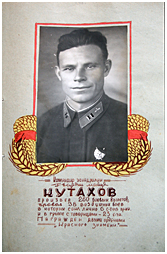 The USSR Supreme Soviet Ukase of the 22nd February 1943, awarded posthumously to Guards Lieutenant Yefim
Avtomovich Krivosheyev the title Hero of the Soviet Union for courage and
heroism. He was entered eternally on the regiment’s first squadron roster,
according to the USSR Minister of Defense Order N°219 dated October 18, 1972.
Pavel Kutakhov ended the war as a colonel commanding the 20.GvIAP. He flew 379 combat sorties, was engaged in aerial combat 79 times and shot down 13 enemy
aircraft personally and 28 as part of a group (the latest research succeeded in confirming that Kutakhov had only five personal victories). In 1969 Kutakhov
became commanding general of the Soviet Military Air Forces and remained in that high post 15 years.
Grigoriy Dmitryuk, yet another future ace who served with the 19.GvIAP, flew his first combat sorties in a Kittyhawk, and then switched to the Airacobra 1.
By November 1944 Dmitryuk had made captain and took over command of one of the regiment’s squadrons. When the end of the war came, he had flown 206 combat
sorties and participated in aerial combat 37 times, during which he shot down 18 enemy aircraft. Dmitryuk was awarded the title Hero of the Soviet Union. Grigoriy
Dmitryuk became a “double ace.” Flying a MiG-15 in Korea in 1952-1953, he shot down five American aircraft. . .
The USSR Supreme Soviet Ukase of the 22nd February 1943, awarded posthumously to Guards Lieutenant Yefim
Avtomovich Krivosheyev the title Hero of the Soviet Union for courage and
heroism. He was entered eternally on the regiment’s first squadron roster,
according to the USSR Minister of Defense Order N°219 dated October 18, 1972.
Pavel Kutakhov ended the war as a colonel commanding the 20.GvIAP. He flew 379 combat sorties, was engaged in aerial combat 79 times and shot down 13 enemy
aircraft personally and 28 as part of a group (the latest research succeeded in confirming that Kutakhov had only five personal victories). In 1969 Kutakhov
became commanding general of the Soviet Military Air Forces and remained in that high post 15 years.
Grigoriy Dmitryuk, yet another future ace who served with the 19.GvIAP, flew his first combat sorties in a Kittyhawk, and then switched to the Airacobra 1.
By November 1944 Dmitryuk had made captain and took over command of one of the regiment’s squadrons. When the end of the war came, he had flown 206 combat
sorties and participated in aerial combat 37 times, during which he shot down 18 enemy aircraft. Dmitryuk was awarded the title Hero of the Soviet Union. Grigoriy
Dmitryuk became a “double ace.” Flying a MiG-15 in Korea in 1952-1953, he shot down five American aircraft. . .
 During four years of war, Guardsmen flew 9941 combat sorties in which 247 enemy aircraft would have been
destroyed. Pilots of the 19.GvIAP flew successively Polikarpov I-16 (56), MiG-3 (3), LaGG-3 (40), Hawker Hurricane (13),
Curtiss Kittyhawk (25) and Bell Airacobra (92).
The regiment undertook intense and cruel aerial combat after which the aircraft returned with serious
damage. Regimental engineers, technicians and young aviation specialists deserve special mention.
Despite absence of a training base and the terribly strenuous Arctic conditions, they were able to not only
master the new aircraft, but also provide virtually 100-percent serviceability. Absence of technical
documentation on the foreign aircraft caused special difficulties so they were forced when working on
them to employ good sense and military keenness of wit. Pilots had to make emergency
landings from time to time, not making it to the airfield. Technicians then had to evacuate the damaged equipment,
operating at the forward edge of our own defenses. In all, the regimental ITS [Aviation Technical Service]
evacuated 19 aircraft, repaired 7050 aircraft and did 2300 engine repairs.
Summing up the regiment’s participation in the Great Patriotic war, it must be said that the
Guardsmen paid dearly for victory: sixty-four personnel from the regiment, sixty-two pilots and two
technicians died. The title Hero of the Soviet Union was awarded to eight officers, four falling in combat.
During four years of war, Guardsmen flew 9941 combat sorties in which 247 enemy aircraft would have been
destroyed. Pilots of the 19.GvIAP flew successively Polikarpov I-16 (56), MiG-3 (3), LaGG-3 (40), Hawker Hurricane (13),
Curtiss Kittyhawk (25) and Bell Airacobra (92).
The regiment undertook intense and cruel aerial combat after which the aircraft returned with serious
damage. Regimental engineers, technicians and young aviation specialists deserve special mention.
Despite absence of a training base and the terribly strenuous Arctic conditions, they were able to not only
master the new aircraft, but also provide virtually 100-percent serviceability. Absence of technical
documentation on the foreign aircraft caused special difficulties so they were forced when working on
them to employ good sense and military keenness of wit. Pilots had to make emergency
landings from time to time, not making it to the airfield. Technicians then had to evacuate the damaged equipment,
operating at the forward edge of our own defenses. In all, the regimental ITS [Aviation Technical Service]
evacuated 19 aircraft, repaired 7050 aircraft and did 2300 engine repairs.
Summing up the regiment’s participation in the Great Patriotic war, it must be said that the
Guardsmen paid dearly for victory: sixty-four personnel from the regiment, sixty-two pilots and two
technicians died. The title Hero of the Soviet Union was awarded to eight officers, four falling in combat.
 |
19.GvIAP > Part 2 | > Part 3 |
